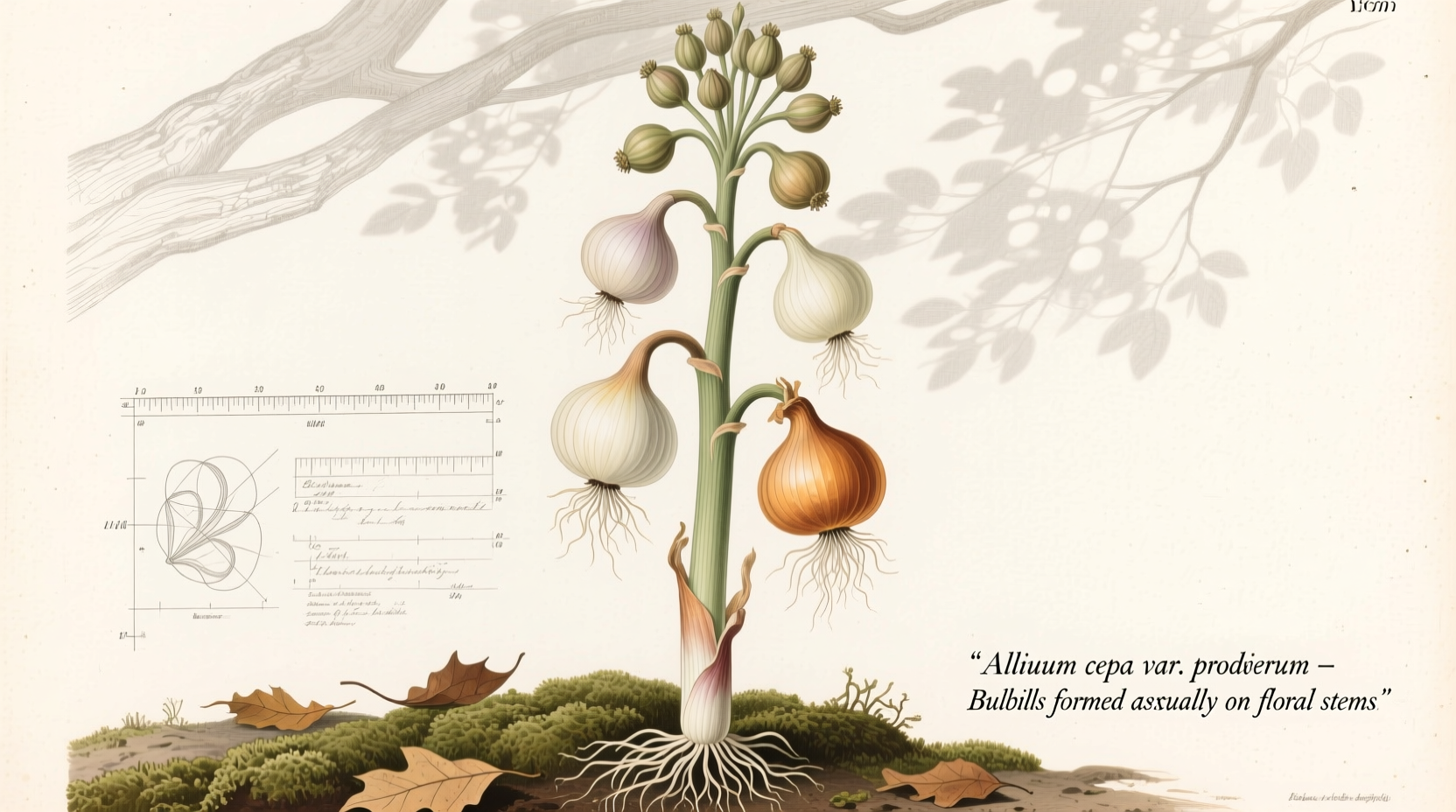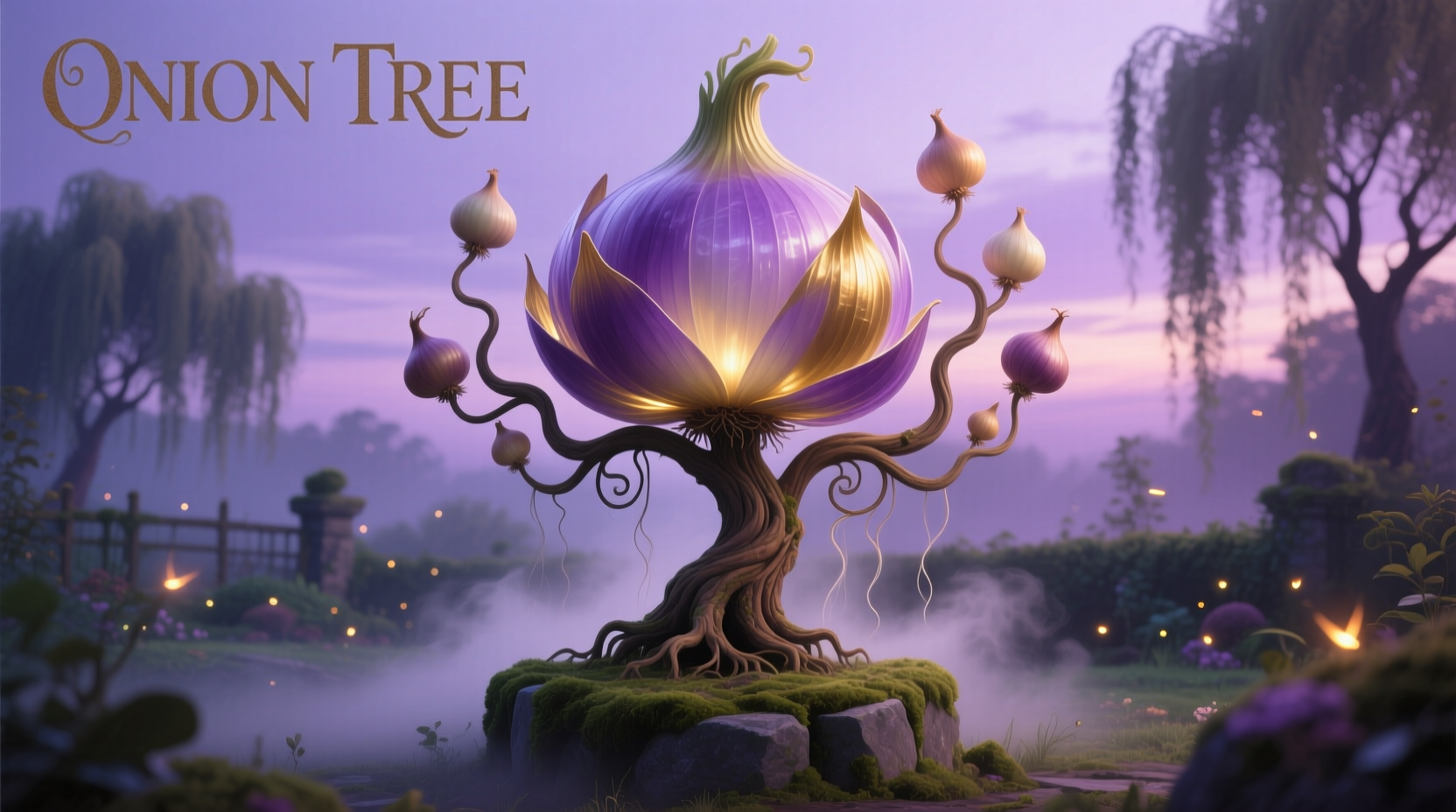Understanding the “Onion Tree” Misconception
When gardeners search for “onion tree plant,” they're often surprised to learn that true bulb onions never grow on trees. This confusion stems from several botanical realities that we'll clarify immediately. The term refers to specific allium varieties with unusual growth patterns, not actual tree-forming plants. Let's examine what gardeners actually encounter when searching for this term.
What “Onion Tree” Really Means in Botanical Terms
The phrase “onion tree” creates understandable confusion. Botanically speaking, no member of the Allium family grows as a tree with woody stems and branches. However, two plants commonly get mislabeled as “onion trees” due to their distinctive growth habits:
| Plant Type | Scientific Name | Common Misnomer | Actual Growth Habit |
|---|---|---|---|
| Tree Onion | Allium proliferum | “Egyptian Walking Onion” | Produces bulblets atop stalks that bend to ground |
| Persian Shallot | Allium stipitatum | “Onion Tree” in some regions | Large bulb former with tall flower stalks |
| Onion Wood | Eleutherococcus sieboldianus | Unrelated naming coincidence | Actual tree with no culinary onion relation |
The Evolution of the “Onion Tree” Confusion
Historical records show how this terminology developed over time. According to research from the Royal Horticultural Society's archives, the term “walking onion” first appeared in English gardening texts around 1850, describing how the topset bulblets would “walk” across gardens as they bent and rooted. By the early 20th century, seed catalogs began using “onion tree” as a marketing term for these unusual alliums, creating persistent confusion.

Tree Onions: Your Complete Growing Guide
If you're searching for “onion tree plant” because you want to grow these unique alliums, Allium proliferum is what you need. These remarkable plants offer several advantages over traditional onions:
Planting and Care Requirements
Tree onions thrive in USDA zones 3-9 with minimal care. Unlike regular onions that require annual replanting, tree onions establish permanent patches. Plant sets 1-2 inches deep in fall or early spring in well-draining soil with pH 6.0-7.5. They need 6+ hours of sunlight but tolerate partial shade better than bulb onions.
Harvesting Techniques for Maximum Yield
Tree onions provide three harvest opportunities throughout the growing season:
- Spring: Harvest small underground bulbs like scallions
- Summer: Collect mature underground bulbs
- Late summer: Harvest aerial bulblets before they bend to ground
For continuous production, leave some aerial bulblets to “walk” and establish new plants. The RHS recommends harvesting no more than 70% of bulblets to maintain your patch.
Practical Applications in Your Garden
Tree onions serve multiple functions beyond food production. Their persistent growth habit makes them excellent for:
- Border edging in perennial gardens
- Pest deterrent (like other alliums)
- Ornamental interest with distinctive topset bulblets
Unlike regular onions that complete their life cycle in one season, tree onions form permanent colonies. This creates important context boundaries: they're ideal for permanent vegetable gardens but can become invasive in small spaces. The University of Vermont Extension notes they're best contained in dedicated beds or containers.
Common Misconceptions Clarified
Several persistent myths surround “onion trees.” Let's address the most frequent questions gardeners encounter:
- Myth: “Onion trees produce fruit-like onions.” Fact: The aerial bulblets are vegetative clones, not fruit.
- Myth: “Tree onions need special soil.” Fact: They thrive in average garden soil with decent drainage.
- Myth: “All parts are equally flavorful.” Fact: Aerial bulblets are strongest, greens most delicate.
Why This Matters for Home Gardeners
Understanding the reality behind “onion tree plant” terminology prevents wasted effort and disappointment. When you search for growing instructions, knowing you need Allium proliferum rather than expecting a tree-forming onion saves time and resources. These resilient plants offer year-round harvest potential with minimal maintenance once established—a valuable asset for sustainable gardening.











 浙公网安备
33010002000092号
浙公网安备
33010002000092号 浙B2-20120091-4
浙B2-20120091-4